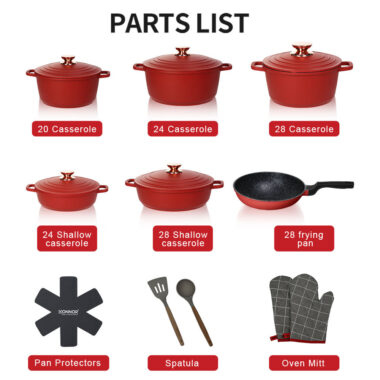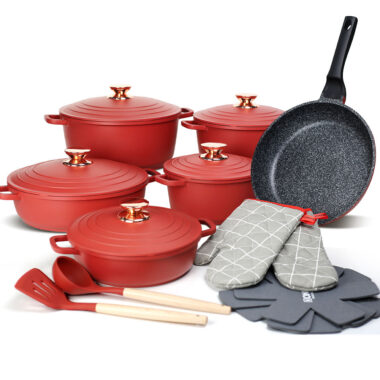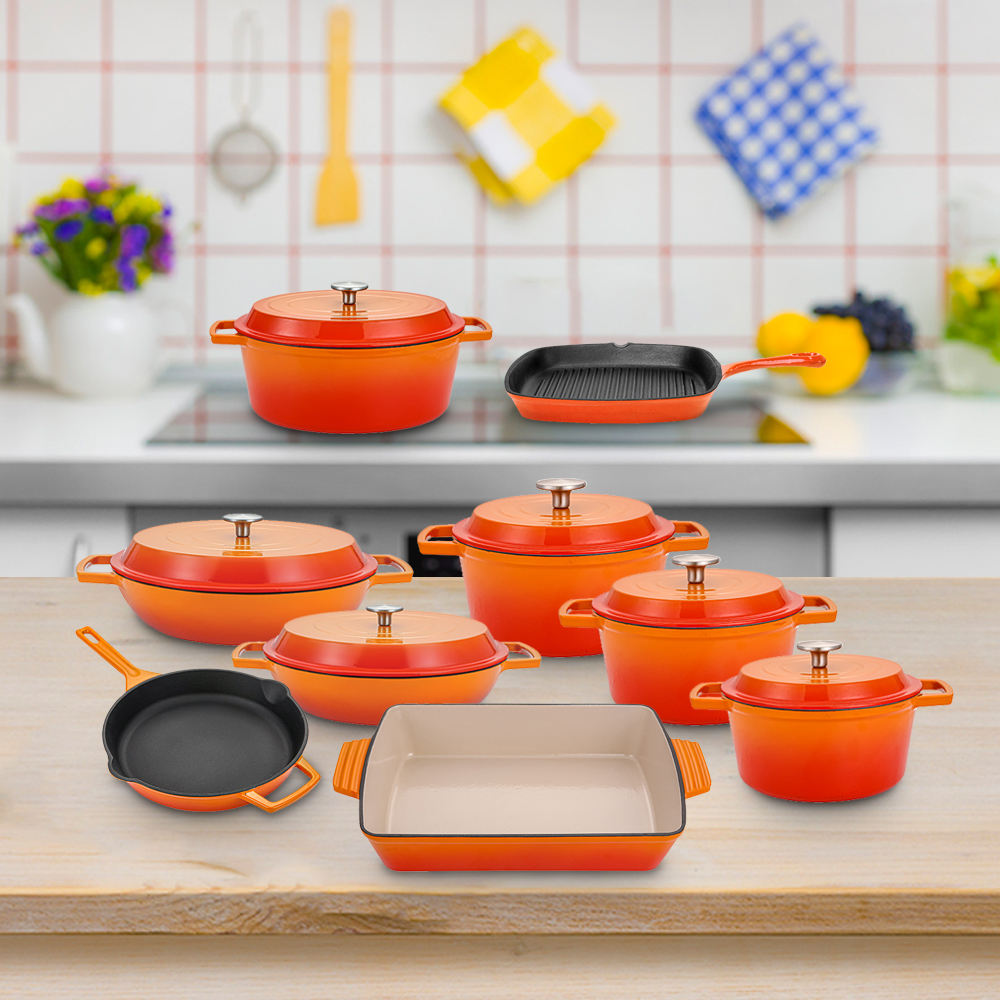Here’s “The Ultimate Cookware Buying Guide: Materials, Types & Uses”, structured as a comprehensive blog post or guide suitable for your website or eCommerce content. It’s SEO-friendly, informative, and easy to read for beginners and enthusiasts alike.
🥘 The Ultimate Cookware Buying Guide: Materials, Types & Uses
Choosing the right cookware can feel overwhelming with so many options on the market. Whether you’re upgrading your kitchen or buying your first set, this guide will walk you through essential cookware materials, types, and their best uses—so you can cook smarter, not harder.
🍳 1. Cookware Materials: Pros & Cons
The material of your cookware affects heat conductivity, durability, reactivity, and maintenance. Here’s a breakdown:
| Material | Pros | Cons | Best For |
|---|---|---|---|
| Stainless Steel | Durable, non-reactive, dishwasher-safe, oven-safe | Poor heat conductivity (unless bonded with aluminum/copper) | Searing, browning, sauces |
| Cast Iron | Excellent heat retention, ideal for high heat | Heavy, requires seasoning, rust-prone | Stews, frying, oven dishes |
| Enameled Cast Iron | Easy to clean, doesn’t require seasoning, retains heat well | Expensive, heavy | Braising, slow cooking, soups |
| Non-Stick (Teflon or Ceramic) | Easy to clean, requires less oil | Not for high heat, can scratch or degrade over time | Eggs, pancakes, delicate foods |
| Copper | Best heat conductor, precise temperature control | Expensive, reacts with acidic food, needs polishing | Candy making, sauces |
| Aluminum | Lightweight, affordable, heats evenly (anodized preferred) | Warps easily, reactive if not anodized | Everyday cooking, stir-fries |
| Carbon Steel | Lighter than cast iron, develops non-stick over time | Needs seasoning, prone to rust | Woks, crepes, roasting |
🍲 2. Types of Cookware You Need
Not all cookware is created equal. Here’s a breakdown of must-have cookware types and what they’re good for:
✅ Essential Pieces:
- Frying Pan / Skillet: Searing, sautéing, stir-frying
- Saucepan: Boiling, simmering, making sauces
- Stockpot / Soup Pot: Cooking pasta, soups, and broths
- Dutch Oven: Baking, braising, stewing
- Saute Pan: Sautéing, pan-frying with more surface area
- Griddle / Grill Pan: Pancakes, burgers, grilled veggies
🍕 Optional but Nice to Have:
- Wok: Stir-fries, fried rice
- Roasting Pan: Roasts, large casseroles
- Braiser: Similar to Dutch oven but wider, shallower
- Steamer Basket / Insert: Healthy vegetable steaming
🔥 3. Cookware Use Tips by Cooking Style
| Cooking Style | Ideal Cookware |
|---|---|
| High-Heat Searing | Stainless steel, cast iron |
| Slow Cooking | Enameled cast iron, Dutch oven |
| Quick Frying | Carbon steel, non-stick skillet |
| Boiling & Simmering | Stainless steel or aluminum saucepan |
| Baking / Oven Use | Enameled cast iron, oven-safe sets |
🧽 4. Cookware Maintenance Tips
- Non-stick pans: Use silicone or wooden utensils; avoid high heat.
- Cast iron: Clean with warm water and reseason regularly.
- Copper: Polish with lemon and salt or commercial cleaner.
- Stainless steel: Soak burnt spots with vinegar + baking soda.
🛒 5. How to Choose the Right Cookware Set
Consider:
- Cooking habits: Do you sauté or simmer more?
- Stovetop compatibility: Induction needs magnetic base.
- Oven-safe? Important for baking and braising.
- Budget: Invest in core pieces; upgrade over time.
- Health-conscious? Opt for PFOA/PFOS-free and non-reactive materials.
Final Thoughts
There’s no one-size-fits-all when it comes to cookware. The best setup combines a few core pieces across different materials to match your cooking style. Whether you’re going all-in with a complete enameled cast iron set or slowly building a stainless steel collection, the key is choosing pieces that suit your needs—and inspire you to cook more.
If you’d like, I can turn this into a downloadable PDF, interactive buying guide, or even tailor it for your brand’s cookware product page or blog. Would you like a version for SEO with specific keywords included?







